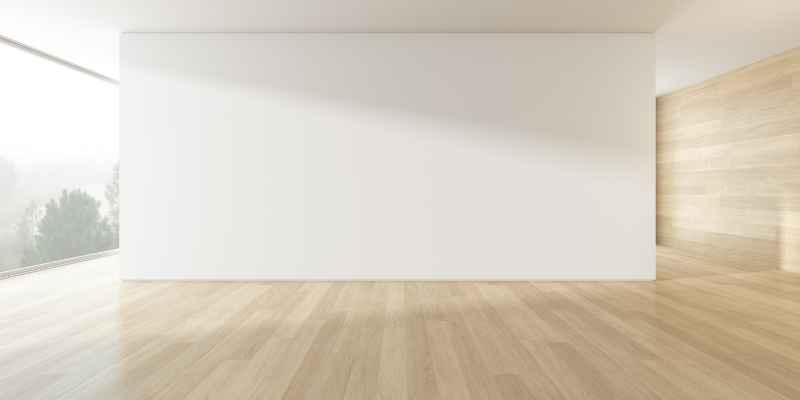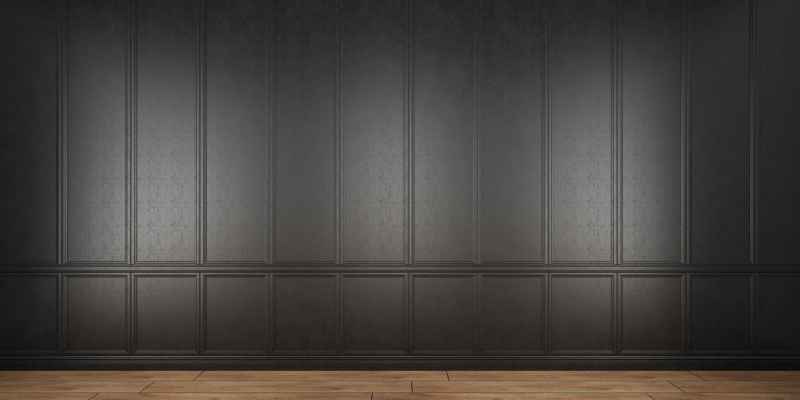Yes, you can put wood flooring on walls.
Benefits Of Using Wood Flooring On Walls
Wood flooring on walls offers numerous benefits including a warm and natural aesthetic, improved insulation, and easy maintenance. Transform your space with the timeless appeal of wood, creating a cozy and inviting atmosphere.
Variety Of Designs
Using wood flooring on walls opens up a world of design possibilities. With a vast array of wood species, finishes, and textures to choose from, you can create a unique look that complements any style of interior. Whether you prefer a rustic, farmhouse vibe or a sleek, modern aesthetic, wood flooring on walls allows you to achieve the desired look effortlessly.
Warm And Inviting
Wood exudes warmth and coziness that instantly transforms any space into a welcoming retreat. When used on walls, wood flooring adds character and charm, creating a cozy atmosphere that is often hard to replicate with other materials. The natural beauty of wood brings a sense of comfort and tranquility, making it an ideal choice for bedrooms, living rooms, and even entryways.
Eco-friendly Option
Opting for wood flooring on walls is not only a stylish choice but also an eco-friendly one. Wood is a renewable resource, and when sustainably sourced, it contributes to the promotion of sustainable forestry practices. By using wood flooring on walls, you are reducing the demand for other less sustainable materials, such as concrete or plastic. Additionally, wood is a natural insulator, helping to regulate temperature and improve energy efficiency in your home.

Considerations Before Installing Wood Flooring On Walls
When considering installing wood flooring on walls, there are a few important factors to keep in mind. Assess the condition and suitability of the walls, consider the weight and stability of the flooring material, and plan for proper installation methods to ensure a successful and durable outcome.
Structural Integrity
Before installing wood flooring on walls, it is crucial to assess the structural integrity of the wall. Wood flooring adds additional weight to the wall, requiring it to bear the load without compromising its stability. A weakened or poorly constructed wall may not be able to support the weight, leading to potential damage or even collapse.
Moisture And Humidity
Moisture and humidity are significant factors to consider when placing wood flooring on walls. Wood naturally expands and contracts with changes in moisture content, which can lead to warping, buckling, or gaps in the flooring. Before installation, it is essential to ensure that the wall is not exposed to excessive moisture or humidity. Proper waterproofing and moisture barrier measures should be implemented to protect both the wall and the wood flooring from any potential damage caused by these environmental factors.
Preparing The Wall Surface
Preparing the wall surface is a crucial step in successfully installing wood flooring. The wall should be clean, dry, and smooth before applying any adhesive or fastening the flooring. Any existing wallpaper, paint, or other wall coverings should be removed, and the wall should be free from any cracks or imperfections that may impact the installation process. It is recommended to sand the wall lightly to create a better surface for adhesion and ensure a secure fit for the wood flooring.
Step-by-step Guide To Installing Wood Flooring On Walls
Are you looking to add a touch of warmth and rustic charm to your space? Installing wood flooring on walls might be the perfect solution for you. Not only does it bring a unique aesthetic appeal, but it also provides insulation and soundproofing benefits.
Gathering The Necessary Tools And Materials
Before you begin installing wood flooring on walls, it’s essential to gather all the necessary tools and materials. Here’s a quick list of what you’ll need:
| Tools: | Materials: |
|
|
Measuring And Cutting The Wood Planks
Accurate measurements are crucial for a seamless installation. Begin by measuring the length and height of the wall where you’ll be installing the wood flooring. Use these measurements to determine the size of each wood plank. Cut the planks to the desired length using a saw, ensuring they fit snugly onto the wall. Use a tape measure, level, and chalk line to guide your cuts and ensure precision.
Prepping The Wall And Applying Adhesive
Before attaching the wood planks, it’s essential to prepare the wall. Start by removing any existing wallpaper or paint using a putty knife and sanding the surface for a smooth finish. Next, apply a primer coat to help the adhesive adhere better to the wall. Once the primer is dry, apply the adhesive to the back of each wood plank, ensuring even coverage.
Installing The Wood Planks
Now comes the exciting part – installing the wood planks on the wall. Start at the bottom and work your way up, ensuring the planks are level and aligned correctly. Use a finish nailer or adhesive to secure them in place. Be sure to leave a small gap between each plank for expansion. Continue this process until you reach the top of the wall.
Finishing Touches
Once all the wood flooring planks are installed on the wall, it’s time for the finishing touches. Fill any nail holes with spackle and sand them smooth. Apply caulk to any gaps between the planks and the wall for a polished look. If desired, you can also install baseboards along the edges to conceal any gaps and add a finished touch.
With these simple steps, you can transform your space with the warmth and elegance of wood flooring on your walls. So go ahead and embark on this exciting DIY project to create a stunning focal point and unique atmosphere in your home.
Creative Ideas For Using Wood Flooring On Walls
If you’re looking for a unique way to enhance your home décor, consider using wood flooring on your walls. Not only does this add a touch of warmth and natural beauty to your space, but it also opens up a world of creative possibilities. In this article, we will explore three exciting ideas for using wood flooring on walls that will make a statement, add texture and visual interest, and enhance the room’s acoustics.
Creating A Statement Wall
Wood flooring can effortlessly transform a plain wall into a stunning focal point within any room. By using wood flooring to create a statement wall, you can add depth and character to your space. One creative idea is to choose a contrasting wood color or pattern that complements the existing decor. This effectively draws attention to the wall and creates a visually captivating feature. Additionally, you can install the wood flooring vertically or diagonally to add even more interest.
Adding Texture And Visual Interest
Wood flooring on walls instantly lends textural and visual interest to any space. One innovative way to achieve this is by using different wood species or finishes to create a captivating pattern. Mixing and matching widths, lengths, and colors of wood planks can also result in a visually striking effect. The natural variations present in wood add depth and warmth to the walls, making the room feel inviting and visually engaging.
Enhancing The Room’s Acoustics
Wood flooring has excellent sound-absorbing properties, making it an ideal material if you want to improve the acoustics of a room. Applying wood flooring to the walls helps to reduce echoes and reverberations, resulting in a more pleasant and balanced sound environment. This is especially beneficial for rooms where sound quality is crucial, such as home theaters, music studios, or living spaces with high ceilings.
Moreover, wood contributes to better indoor air quality by reducing dust and allergens, creating a healthier environment for you and your family.
In conclusion, using wood flooring on walls presents numerous creative opportunities to enhance your home’s aesthetic appeal. Whether you’re aiming to create a statement wall, add texture and visual interest, or improve the room’s acoustics, incorporating wood flooring on your walls can result in a stunning and unique space.

Maintenance And Care For Wood Flooring On Walls
Wood flooring is not just limited to the floors in your home. It can also make a stunning statement when used on walls. But, like any other wood surface, it requires regular maintenance and care to ensure its longevity and beauty. In this article, we will discuss the important aspects of maintaining and caring for wood flooring on walls.
Regular cleaning and dusting are essential to keep your wood flooring on walls looking pristine. Follow these simple steps to maintain its natural charm:
- Vacuum: Use a soft brush attachment to remove loose dirt and dust. Ensure that you reach all crevices and corners.
- Damp Mop: Use a well wrung-out mop or microfiber cloth to gently mop the wood surface. Avoid excessive moisture as it can cause damage.
- Wood Floor Cleaner: Use a specialized wood floor cleaner that is safe for both floors and walls. Follow the manufacturer’s instructions for application.
- Avoid Harsh Chemicals: Harsh chemicals can strip away the protective finish and damage the wood. Opt for gentle, non-abrasive cleaners.
- Dry Thoroughly: After cleaning, ensure that the wood surface is completely dry to prevent moisture-related issues.
Over time, scratches and dents may occur on your wood flooring on walls. Here’s how you can repair them:
- Filler: Use a wood filler that matches the color of your wood to fill in scratches and dents. Apply it with a putty knife, ensuring a smooth and even finish.
- Sanding: Once the filler has dried, lightly sand the repaired area to blend it with the surrounding wood. Use fine-grit sandpaper and be gentle to avoid damage.
- Finishing Touch: Apply a thin coat of wood finish or varnish to protect the repaired area and match the rest of the wall. Follow the manufacturer’s instructions for application.
- Regular Maintenance: To prevent future scratches and dents, consider using protective coverings or furniture pads to minimize direct contact.
Moisture is the nemesis of wood, regardless of whether it is installed on floors or walls. Protect your wood flooring from moisture damage by following these measures:
- Avoid Direct Water Exposure: Keep the wood surface dry and prevent water from coming into direct contact with it. Wipe up spills immediately.
- Maintain Proper Ventilation: Ensure that the room is well-ventilated to reduce humidity levels and prevent moisture buildup.
- Use Sealants: Apply a wood sealant or finish that provides an added layer of protection against moisture. Reapply as needed according to the manufacturer’s recommendations.
- Regular Inspections: Regularly inspect your wood flooring on walls for signs of moisture damage, such as discoloration, warping, or mold growth. Address any issues promptly.
With proper maintenance and care, your wood flooring on walls can continue to enhance the aesthetic appeal of your space for years to come. By following these cleaning, repairing, and moisture protection practices, you can ensure that your wood walls remain a stunning and durable feature in your home.
Conclusion
Putting wood flooring on walls can be a creative and stunning way to add warmth and texture to any space. With its natural beauty and durability, wood flooring can transform a plain wall into a focal point. However, it’s essential to ensure proper installation techniques and maintenance to prevent any issues.
Remember to consider factors like wall preparation, adhesive selection, and acclimation. So, whether you’re aiming for a rustic or contemporary look, don’t hesitate to explore the possibilities of wood flooring on walls.


